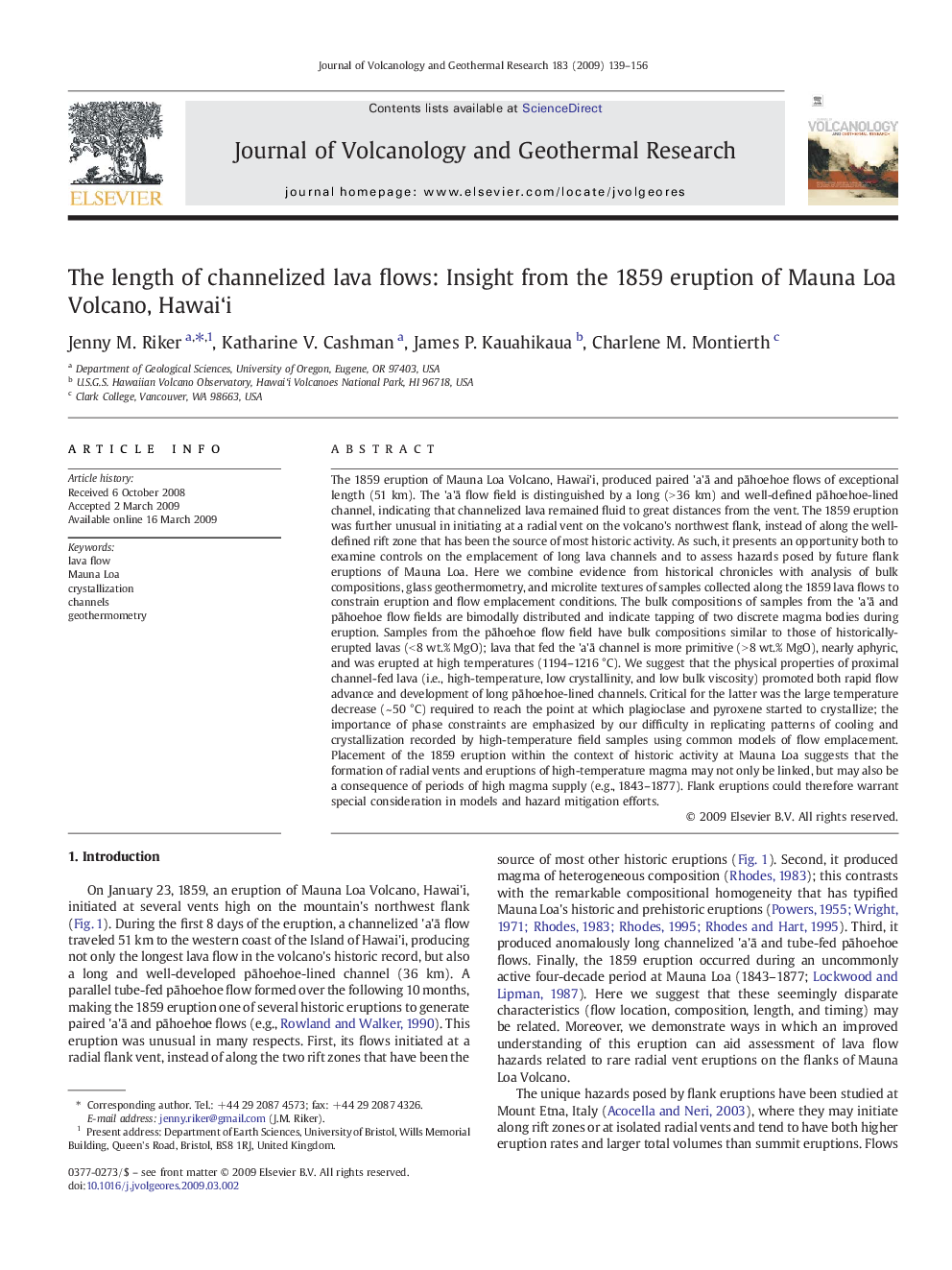| کد مقاله | کد نشریه | سال انتشار | مقاله انگلیسی | نسخه تمام متن |
|---|---|---|---|---|
| 4714331 | 1638436 | 2009 | 18 صفحه PDF | دانلود رایگان |

The 1859 eruption of Mauna Loa Volcano, Hawai'i, produced paired 'a'ā and pāhoehoe flows of exceptional length (51 km). The 'a'ā flow field is distinguished by a long (> 36 km) and well-defined pāhoehoe-lined channel, indicating that channelized lava remained fluid to great distances from the vent. The 1859 eruption was further unusual in initiating at a radial vent on the volcano's northwest flank, instead of along the well-defined rift zone that has been the source of most historic activity. As such, it presents an opportunity both to examine controls on the emplacement of long lava channels and to assess hazards posed by future flank eruptions of Mauna Loa. Here we combine evidence from historical chronicles with analysis of bulk compositions, glass geothermometry, and microlite textures of samples collected along the 1859 lava flows to constrain eruption and flow emplacement conditions. The bulk compositions of samples from the 'a'ā and pāhoehoe flow fields are bimodally distributed and indicate tapping of two discrete magma bodies during eruption. Samples from the pāhoehoe flow field have bulk compositions similar to those of historically-erupted lavas (< 8 wt.% MgO); lava that fed the 'a'ā channel is more primitive (> 8 wt.% MgO), nearly aphyric, and was erupted at high temperatures (1194–1216 °C). We suggest that the physical properties of proximal channel-fed lava (i.e., high-temperature, low crystallinity, and low bulk viscosity) promoted both rapid flow advance and development of long pāhoehoe-lined channels. Critical for the latter was the large temperature decrease (~ 50 °C) required to reach the point at which plagioclase and pyroxene started to crystallize; the importance of phase constraints are emphasized by our difficulty in replicating patterns of cooling and crystallization recorded by high-temperature field samples using common models of flow emplacement. Placement of the 1859 eruption within the context of historic activity at Mauna Loa suggests that the formation of radial vents and eruptions of high-temperature magma may not only be linked, but may also be a consequence of periods of high magma supply (e.g., 1843–1877). Flank eruptions could therefore warrant special consideration in models and hazard mitigation efforts.
Journal: Journal of Volcanology and Geothermal Research - Volume 183, Issues 3–4, 10 June 2009, Pages 139–156